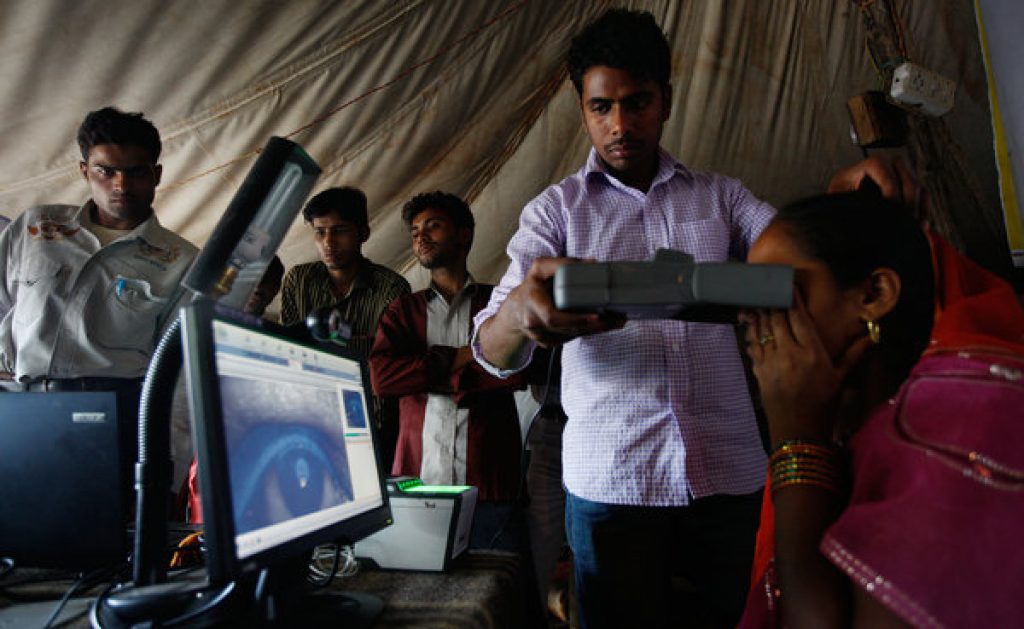My previous writeup, which discussed the emotion-and-other discernment powers of latest-generation embedded vision setups, may have raised privacy-concern red flags in some of your psyches. If that was the case, this piece will hopefully provide a counterbalancing perspective. A wonderful article from the New York Times, which I first read in print and subsequently found online, discusses how fingerprint and retina scans are being used to assign unique 12-digit identification codes to indigent residents of India for the purposes of (among other things) obtaining benefits owed them but until now, rarely collected.
From the writeup, entitled "Scanning 2.4 Billion Eyes, India Tries to Connect Poor to Growth":
Ankaji Bhai Gangar, a 49-year-old subsistence farmer, stood in line in this remote village until, for the first time in his life, he squinted into the soft glow of a computer screen.
His name, year of birth and address were recorded. A worker guided Mr. Gangar’s rough fingers to the glowing green surface of a scanner to record his fingerprints. He peered into an iris scanner shaped like binoculars that captured the unique patterns of his eyes.
With that, Mr. Gangar would be assigned a 12-digit number, the first official proof that he exists. He can use the number, along with a thumbprint, to identify himself anywhere in the country. It will allow him to gain access to welfare benefits, open a bank account or get a cellphone far from his home village, something that is still impossible for many people in India.
“Maybe we will get some help,” Mr. Gangar said.
Across this sprawling, chaotic nation, workers are creating what will be the world’s largest biometric database, a mind-bogglingly complex collection of 1.2 billion identities. But even more radical than its size is the scale of its ambition: to reduce the inequality corroding India’s economic rise by digitally linking every one of India’s people to the country’s growth juggernaut.
To my earlier mentioned privacy-concern comments:
The identity database has so far met only muffled opposition. Privacy watchdogs worry that the identity numbers will be abused by a snooping state that cares little for civil liberties. Leftists fret that the database will lead to an erosion of the state’s role in helping the poor. But powerful and corrupt bureaucrats, politicians and businessmen who thrive on the current system’s opacity have yet to object publicly, though they almost certainly will once the challenge to the way they do business becomes evident.
And keep this cynicism-balancing perspective, put into words by a homeless rickshaw puller named Mohammed Jalil, in mind:
“That will give me an identity,” he said, gesturing at the computer station where he had just completed his enrollment. “It will show that I am a human being, that I am alive, that I live on this planet. It will prove I am an Indian.”
I encourage you to read the whole article. And if after doing so, you find yourself feeling good about the industry you work in and its positive potential impacts on society, go ahead and take pride. You deserve it.


